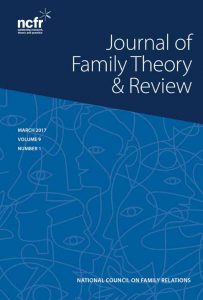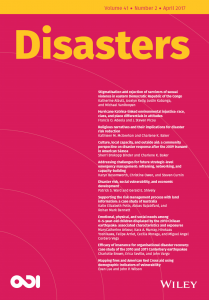Explanations of Contemporary School Discipline
 Over the past two decades, schools across the U.S. have adopted a host of punitive practices and policies to prevent and respond to student misbehavior (Kupchik 2010). These practices include the use of security cameras, metal detectors, drug-sniffing dogs, and the full-time presence of police officers. Consequentially, the distinction between school discipline and criminal justice has become highly blurred. For a host of reasons, there has been an increase in surveillance over students and a tighter link between the education and criminal justice for a host of (Hirschfield & Celinscka 2011). The purpose of this post is to provide, from the extant literature, explanations for the rise of criminal justice based practices within schools.
Over the past two decades, schools across the U.S. have adopted a host of punitive practices and policies to prevent and respond to student misbehavior (Kupchik 2010). These practices include the use of security cameras, metal detectors, drug-sniffing dogs, and the full-time presence of police officers. Consequentially, the distinction between school discipline and criminal justice has become highly blurred. For a host of reasons, there has been an increase in surveillance over students and a tighter link between the education and criminal justice for a host of (Hirschfield & Celinscka 2011). The purpose of this post is to provide, from the extant literature, explanations for the rise of criminal justice based practices within schools.
Perhaps the most common explanation for contemporary school discipline and security is fear. This explanation interprets the criminalization of school discipline as a socio-political response to anxieties concerning school crime and broader insecurities (Hirschfield & Celinscka 2011). This line of thought reflects others theorizing the rise of crime control practices more broadly. Social theorists comment that individuals’ fear has become a generalized concern, reconfiguring social institutions and contemporary governance. Consequently, crime control practices and policies have made predicting, identifying, and effectively managing behaviors which threaten the rational order a central objective.
Such practices certainly apply to wider sentiments regarding youth. On the one hand, youth are to be protected; they are seen as a vulnerable population that symbolize a sort of innocence. On the other hand, youth represent an unruly population requiring constant monitoring. Insecurities, when coupled with fears about youth vulnerability, have moved schools to take a proactive stance toward preventing violent acts from occurring within schools. As a result, administrators and policy makers have adopted punitive disciplinary practices and various visible security measures. Initially, these efforts were established to curb societal fears of school crime. However, scholars critical of this trend suggests that these practices have begun targeting youth instead.
Another explanation draws on critical functionalism’s “social reproduction theory”, suggesting that schools perpetuate social and economic inequalities by equipping different classes of youth with skills aligned with their expected position in the labor force. Recent literature suggests that schools ensure social and economic compliance from youth by shifting disciplinary power from the school to the criminal justice system. For example, Kupchik and Monahan (2006) consider how school criminalization prepares youth for post-industrial employment. Drug testing students normalizes urine screens on the job, educational monitoring systems mimic highly scrutinized work environments, and zero-tolerance reflects a fleeting power among laborers. It is clear that disciplinary practices within schools socialize youth into modern configurations.
A final explanation links the criminalization of school discipline to broader anxieties of crime embedded in contemporary social and political structures. Recent theorizing, much like Garland’s (2001) work, attempts to understand the rise of a “culture of control” alongside large scale social, cultural, and political shifts. This framework is also noticeable in Johnathan Simon’s (2007) seminal text Governing Through Crime. His work notes that politicians and legislators exploited people’s escalating awareness and bourgeoning fear of crime as new mechanisms of coercion and control. More specifically, crime allowed politicians to frame citizens as (possible) victims to garner support for new – oftentimes more punitive – legislation. Within the context of education, violence in schools, or the potential of violence, overwhelmed fearful schools and paved an avenue for further governance handed out by the criminal justice system.
Read: Kupchik, A. 2010. Homeroom Security: School Discpline in an Age of Fear. NYU Press.
Hirschfield, P. and Celinska, K. 2011. Beyond FEar: Sociological Perspectives on the Criminalization of School Discpline. Sociologu Compass, 5(1): 1-12





